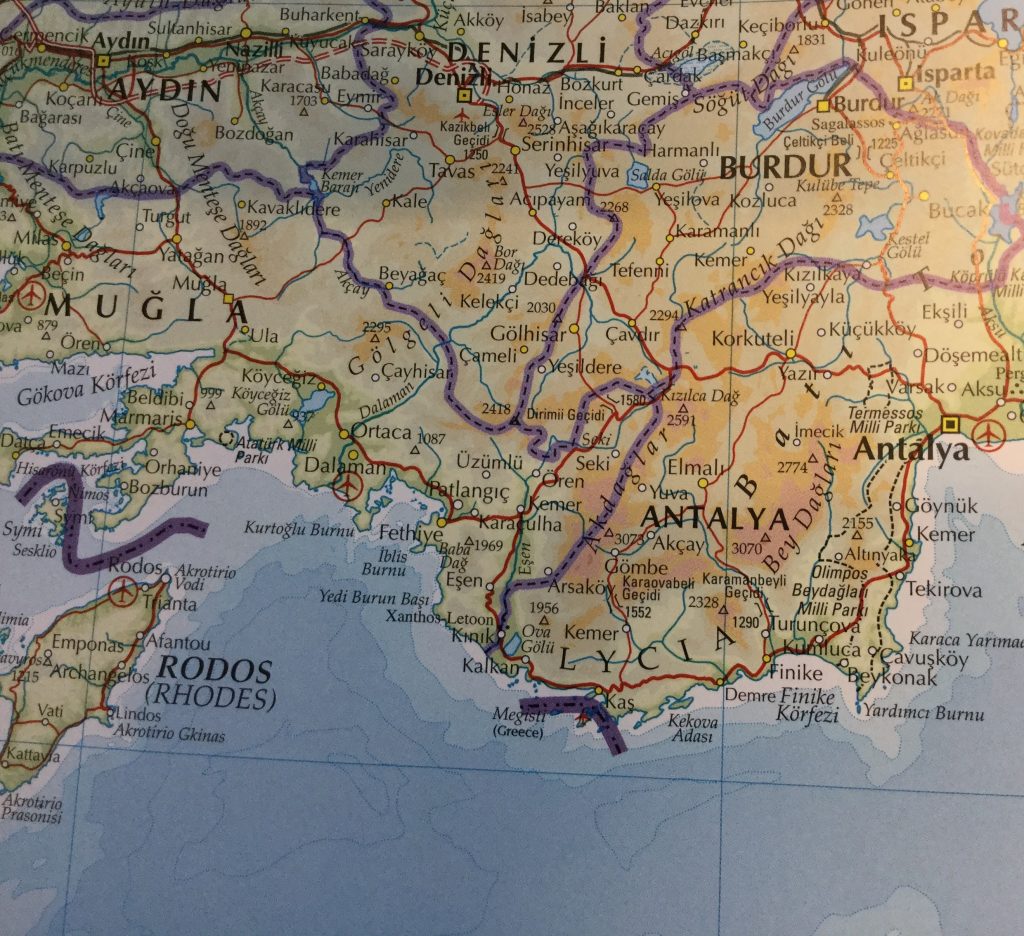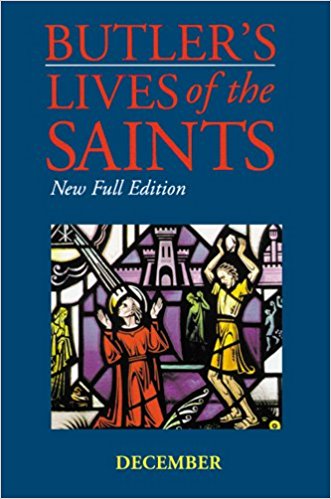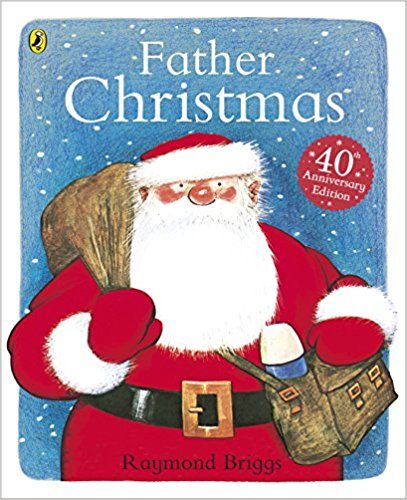How did a 4th century bishop from Asia Minor become the 21st century’s Father Christmas?
Our 21st century Father Christmas is based on a real person – St. Nicholas, a 4th century Bishop of Myra, the capital of the province of Lycia in Asia Minor, which was then part of the Roman Empire and today is in Turkey.
We know very little about him as the only information we have can be gleaned from biographies that were written a long time after his death – in one case 500 years afterwards. Butler’s Lives of the Saints says that the only certain facts are that he was the Bishop of Myra and that his alleged relics were stolen by Italian merchants in 1087 and now rest in coastal town of Bari, the capital of the Puglia in southern Italy. They are in the Basilica di San Nicola which took over a hundred years to build and was finally consecrated in 1197. Today the Basilica attracts many pilgrims, especially Roman Catholics and member of the Russian and Eastern Orthodox Churches, testimony to St. Nicholas’ continuing popularity as a saint.

In the many accounts of his life we are told that he was born in city of Patara in Lycia which is close to the modern day Turkish city of Gelemis in the province of Anatalya. Patara was a major sea port and its location suggests that it would have been a stopping point for Greeks, Romans and anyone making the sea journey from west to east, or vice versa – in the 4th century sea travel was much easier than travelling overland.

St. Nicholas’ parents are said to have died when he was young and to have left him a wealthy young man (it isn’t clear their wealth came from – maybe they were merchants?), and being a kind, generous person, and a Christian, he choose not to spend money on himself but to use his inheritance for the good of others. There are numerous stories about his benevolence, generosity and compassion.St.Nicholas also had a great sense of fairness and justice which often led him to intervene in a court case if he thought the person had been condemned unjustly, and he would make representations to the governors and even the emperor.
He was appointed Bishop of Myra (close to present day Demre) but again we don’t know exactly when and he was briefly imprisoned, and possibly exiled, during the persecution of Christians under the Roman emperor Diocletian. He was freed and returned to Myra after Constantine the Great became the emperor in the early 4th century. Constantine was the first Roman emperor to convert to Christianity and he restored Christian property that had previously been confiscated, built imperially-sponsored churches in Rome and began the process whereby the Roman Empire was to evolve into a Christian state.
Nicholas’ generosity, kindness and sense of justice have made him a very popular saint with around four hundred of churches dedicated to him in England alone. One of the many stories about him is that he heard of an impoverished father who, as he was unable to provide dowries for his three daughters, had decide to sell them into slavery and prostitution. Under cover of darkness, for three nights in a row, Nicholas managed to throw a bag of coins through the window, thus saving the girls from a life of shame. This story led to him becoming the saint of maidens and fruitful marriage and is the origin of his symbol which is three golden balls. This has also become the symbol for pawnbrokers*.
St. Nicholas is also the patron saint of:
- sailors
- children
- pawnbrokers
- merchants
- orphans
- and of Russia, Greece, Puglia, Sicily, Lorraine amongst other places.
Saint Nicholas to Santa Claus
But, to go back to our original question …
St.Nicholas popularity increased over the centuries, with stories of his miracles and episodes from his life being popular subjects for medieval dramas. After the Reformation it was only in the Protestant countries of Europe that devotion to him remained widespread, and his feast day of 6th December was celebrated with the giving of gifts to children. When the Dutch colonists went to the New World they took these traditions with them to New Amsterdam (New York City) where they grew and evolved. At some point St. Nicholas (or Sinterklass as he is known in Dutch) became combined with an old Nordic fairy tale of a magician (hence his residence at the North Pole) who rewarded good children with gifts, and with the Germanic idea of a gift bringer. Santa Claus, as he became in the English-speaking colonies, has been with us ever since with his popularity growing in 19th century as Christmas once again became a more important festival and the customs we have today came into being. A couple of American writers in the early 19th century published books in which we see the beginning of the Father Christmas that we know today. These included Washington Irving’s Knickerbocker’s History of New York, published in 1809, in which he is portrayed as a pipe-smoking Nicholas flying over the rooftops of the city delivering presents to children from his wagon.

The American cartoonist Thomas Nast, inspired by Moore’s poem, drew a genial, white-bearded grandfatherly figure for Harper’s Weekly in 1863. This seems to be where the idea of his red and white garments came from. Later on in 1931 the illustrator Haddon Sundblum created Santa Claus advertisements for Coca-Cola in which he was dressed a in a red suit with a black belt and white fur trim, black boots, and a soft red cap.
In the late 19th century and 20th century Santa Claus became increasingly popular throughout Europe, though St. Nicholas’ feast day had continued to be celebrated in the Low Countries and Germany. In France he is know as Père Noël and in Britain he has been combined with the figure of Father Christmas. In the 21st century he is still as popular as ever and there is no sign of this diminishing.
Father Christmas
The earliest written evidence of a figure personifying Christmas, just as Old Father Thames personifies the Thames, is a carol written by a Devon Rector, Richard Smart, in the mid 15th century, though the idea would obviously have predated the carol, in which he is called Sir Christmas. In Ben Jonson‘s 1616 court entertainment Christmas and his Masque, Christmas appears with his sons: Misrule, Carol, Mince Pie, Gambol, Post and Pan, New Year’s Gift, Mumming, Wassail and Baby Cake. He is mentioned in John Taylor‘s poem Christmas In and Out from 1652. Taylor was a Royalist and the poem was a piece of pro-Christmas Royalist satire written at a time when the Puritans were trying to restrict the celebration of Christmas.
Father Christmas personified the festive celebrations and revelry and his role as a bringer of presents didn’t develop until the 1870s when his identity began to merge with that of Santa Claus.
Celebrating St. Nicholaus’ Day
*In the early 14th century montes pietatis, precursors to today’s pawnbrokers, were established by Franciscan friars, to help the poor. They gave low-interest loans to poor families so they could buy food. Because St. Nicholas was recognized for his generosity and concern for the poor he became the patron saint of the montes pietatis.
Santa Claus trivia
The first mention of Santa Claus in The Times newspaper was on 29th May 1861 when a horse of that name was running in the Heathcote Plate at the Epsom races.
Bibiliography and suggested reading

Barrington’s Atlas of the Greek and Roman World
Butler’s Lives of the Saints: December
A Dictionary of English Folklore
Father Christmas
Germany: Lonely Planet
New Catholic Encyclopedia
The Night before Christmas
The Oxford Classical Dictionary
The Oxford Companion to Food
The Rough Guide to Italy
The Times Atlas of the World
Sources and related links
Basilica di San Nicola
History Today article: The Puritan war on Christmas
National Geographic article: Saint Nicholas to Santa: the Surprising Origins of Mr Claus
Poetry Foundation: Clement Clarke Moore

Library members can access the entries in the Oxford Dictionary of National Biography for the people listed above by clicking on the hyperlinks in the text. The Times Digital Archive is also available to library members.
[Fiona Campbell, Library Assistant]
